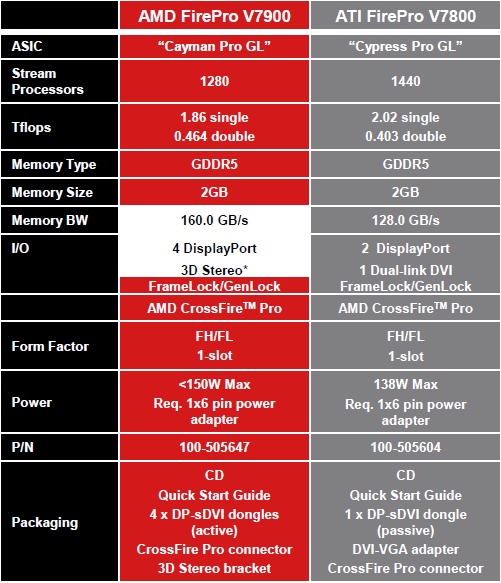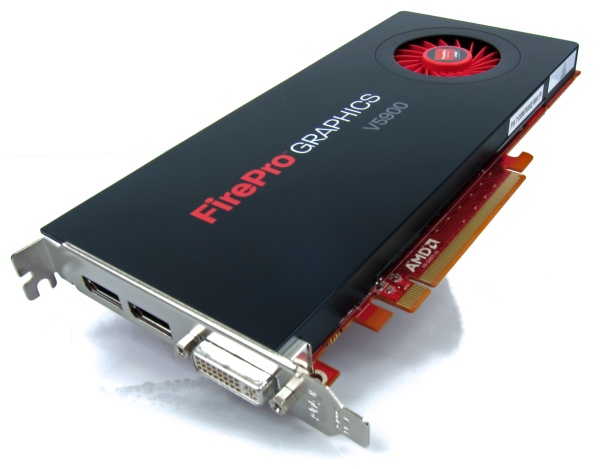AMD FirePro V7900 and V5900 Professional Graphics
Detailed Look
It's true that high-end workstation graphics cards may be based on the same core architectures as their gaming-targeted cousins, however, their purposes are very different. While they both accomplish the same task, processing commands and rendering images on-screen, workstation cards endure a more strenuous existence than their gaming counterparts. Workstation cards are used to solve complex, mission-critical problems, like helping engineers design and build cars; helping architects to plan and construct buildings, and even help oil and gas companies to provide more effective means of production and transportation.

The V7900 is very similar to the V7800 model it supplants in AMD's current line-up, with a few key differences. It utilizes fewer stream processors (1280 vs 1440), but provides more memory bandwidth (160 vs 128 GB/s) and a different I/O configuration. The core clock gets bumped up by a modest 25MHz (725 MHz vs 700 MHz), and the V7900 offers four DisplayPorts instead of the two found on the V7800. In addition, the new card uses more power, maxing out at 150W. The rest of the feature set remains essentially the same.
Like its predecessor, the V7900 uses a matte black heatsink assembly that houses AMD's single-slot copper heatpipe cooling solution. The embedded fan exhausts air out of the back of the card, but there are no vents so the heated air remains within the system. On the front end of the card, we find a single 6-pin PCIe power connector. This is identical to the V7800.

Like the V7900, the new V5900 brings a few changes to the table when compared to the V5800. First, it's based on AMD's Cayman LE architecture versus the Juniper Pro GL core found on the V7800. The V7900 provides fewer stream processors but a larger memory buffer, going from 1GB to 2GB. I/O ports and power consumption remain basically the same.








